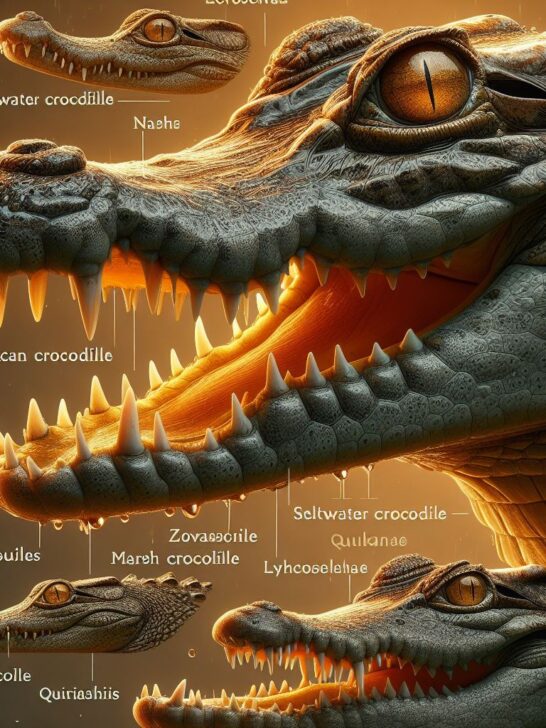Crocodiles, belonging to the family Crocodylidae, are ancient and formidable reptiles with a lineage dating back millions of years. They are apex predators, well-adapted to a diverse range of aquatic habitats across the globe. This article aims to provide an in-depth exploration of the various types of crocodiles, shedding light on their unique characteristics, habitats, behaviors, and ecological significance.
Post Contents
- Lower Classification of Crocs
- Family Crocodylidae (“True” Crocodiles)
- African Slender-snouted Crocodile (Mecistops cataphractus)
- American Crocodile (Crocodylus acutus)
- Australian Freshwater Crocodile (Crocodylus johnstoni)
- Cuban Crocodile (Crocodylus rhombifer)
- Dwarf Crocodile (Osteolaemus tetraspis)
- Morelet’s Crocodile (Crocodylus moreletii)
- Mugger Crocodile (Crocodylus palustris)
- New Guinea Freshwater Crocodile (Crocodylus novaeguineae)
- Nile Crocodile (Crocodylus niloticus)
- Orinoco Crocodile (Crocodylus intermedius)
- Philippine Crocodile (Crocodylus mindorensis)
- Family Crocodylidae (“True” Crocodiles)
- Crocodylinae
- Conclusion:
Lower Classification of Crocs
The lower classifications of crocodiles encompass a diverse array of species, each with its own unique characteristics and habitats. Among them are the iconic Saltwater crocodile, known for its immense size and formidable presence in coastal waters. The American crocodile, native to the Americas, inhabits freshwater and brackish habitats, showcasing a more slender build compared to its saltwater counterpart. The Nile crocodile, a species of large freshwater crocodile, dominates the waterways of Africa with its powerful jaws and territorial behavior.
Marsh crocodiles, as the name suggests, thrive in marshy habitats across Asia, while Dwarf crocodiles, the smallest of the crocodilian family, are found in the rainforests of Africa. Other notable classifications include the West African slender-snouted crocodile, characterized by its elongated snout adapted for hunting in narrow waterways, and Quinkana, an extinct genus of crocodile native to Australia.
Additionally, Zhyrasuchus and Osteolaeminae represent other extinct species and subfamilies, highlighting the evolutionary diversity within the crocodilian lineage. Each of these classifications contributes to the rich tapestry of crocodilian biodiversity, playing integral roles in their respective ecosystems and serving as symbols of ancient lineage and survival prowess.
Family Crocodylidae (“True” Crocodiles)
The number of identified species of extant crocodilians is 24, which are categorised into three Families: Alligatoridae (8 species, which include alligators and caimans), Crocodylidae (14 species, which include “true” crocodiles), and Gavialidae (2 species, which include gharial and tomistoma).

African Slender-snouted Crocodile (Mecistops cataphractus)
Overview: The African Slender-snouted Crocodile, also known as the African slender-snouted crocodile, is a medium-sized crocodilian native to freshwater habitats in central and western Africa. It is characterized by its long, slender snout, which aids in catching fish and other aquatic prey.
Characteristics: This crocodile species has a relatively slender body compared to other crocodiles, with a length ranging from 2 to 4 meters. Its elongated snout allows for precise hunting in narrow streams and rivers, where it primarily feeds on fish, crustaceans, and small mammals.
Habitat: African Slender-snouted Crocodiles inhabit a variety of freshwater habitats, including rivers, lakes, and swamps, preferring slow-moving or stagnant water bodies with dense vegetation for cover and ambush hunting.
Sounds: The African Slender-snouted Crocodile is known for producing low-frequency vocalizations, including grunts, hisses, and bellows, particularly during the breeding season and territorial disputes.
Diet: The diet of the African Slender-snouted Crocodile consists mainly of fish, supplemented by amphibians, crustaceans, and occasionally small mammals and birds.
Predators: While adult African Slender-snouted Crocodiles have few natural predators, hatchlings and juveniles are vulnerable to predation by birds of prey, large fish, and other crocodiles.
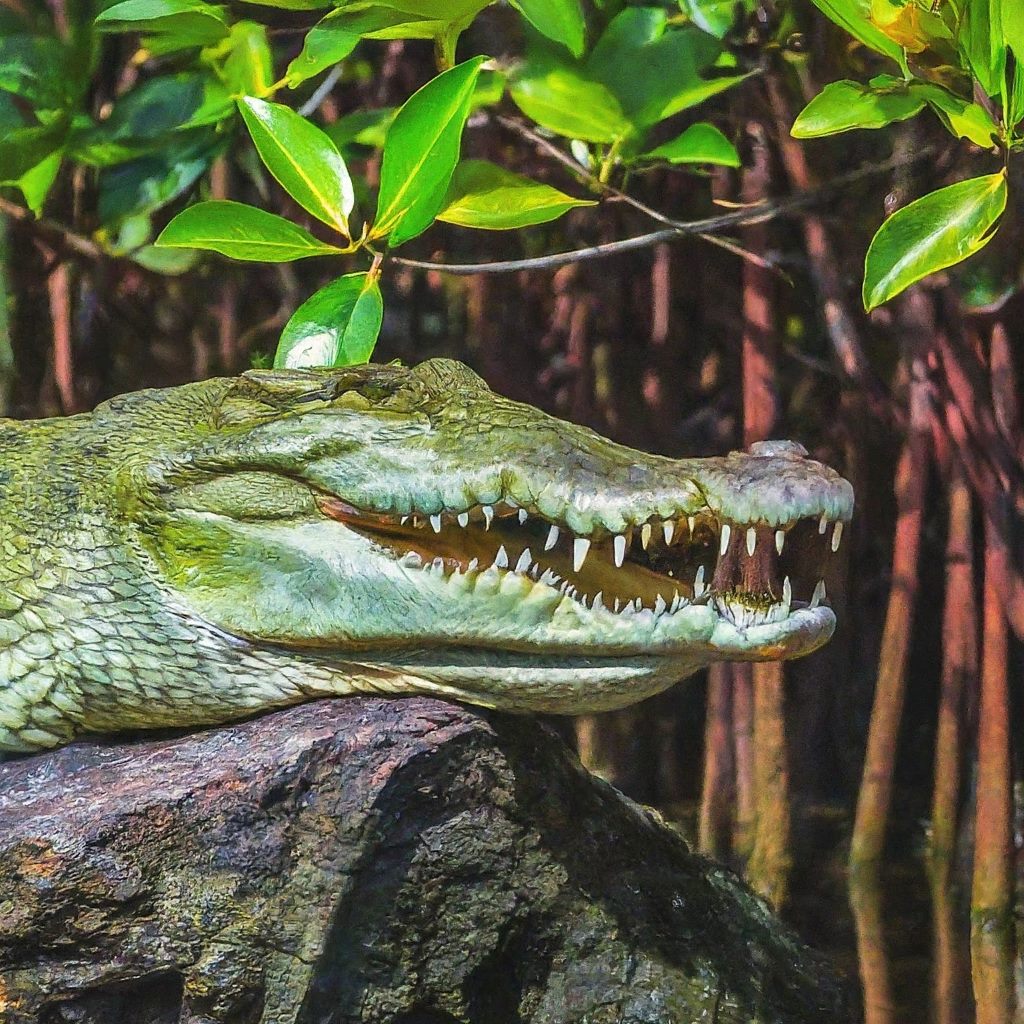
American Crocodile (Crocodylus acutus)
Overview: The American Crocodile is a large crocodilian species native to the Americas, ranging from southern Florida and Mexico to South America. It is well-adapted to both freshwater and brackish habitats, including rivers, estuaries, and coastal lagoons.
Characteristics: American Crocodiles are distinguished by their long, narrow snouts and grayish-green coloration, with adults reaching lengths of up to 6 meters. They have a more slender build compared to their close relative, the American Alligator.
Habitat: American Crocodiles inhabit a variety of aquatic environments, including mangrove swamps, tidal creeks, and coastal marshes, where they can tolerate varying salinity levels.
Sounds: American Crocodiles communicate using a range of vocalizations, including bellows, hisses, and grunts, especially during the mating season and territorial displays.
Diet: American Crocodiles are opportunistic predators, feeding on a diverse range of prey, including fish, crustaceans, small mammals, birds, and occasionally larger prey such as deer or cattle.
Predators: Adult American Crocodiles have few natural predators, although they may occasionally fall prey to large predators such as jaguars or humans. Eggs and hatchlings are vulnerable to predation by raccoons, birds, and other reptiles.
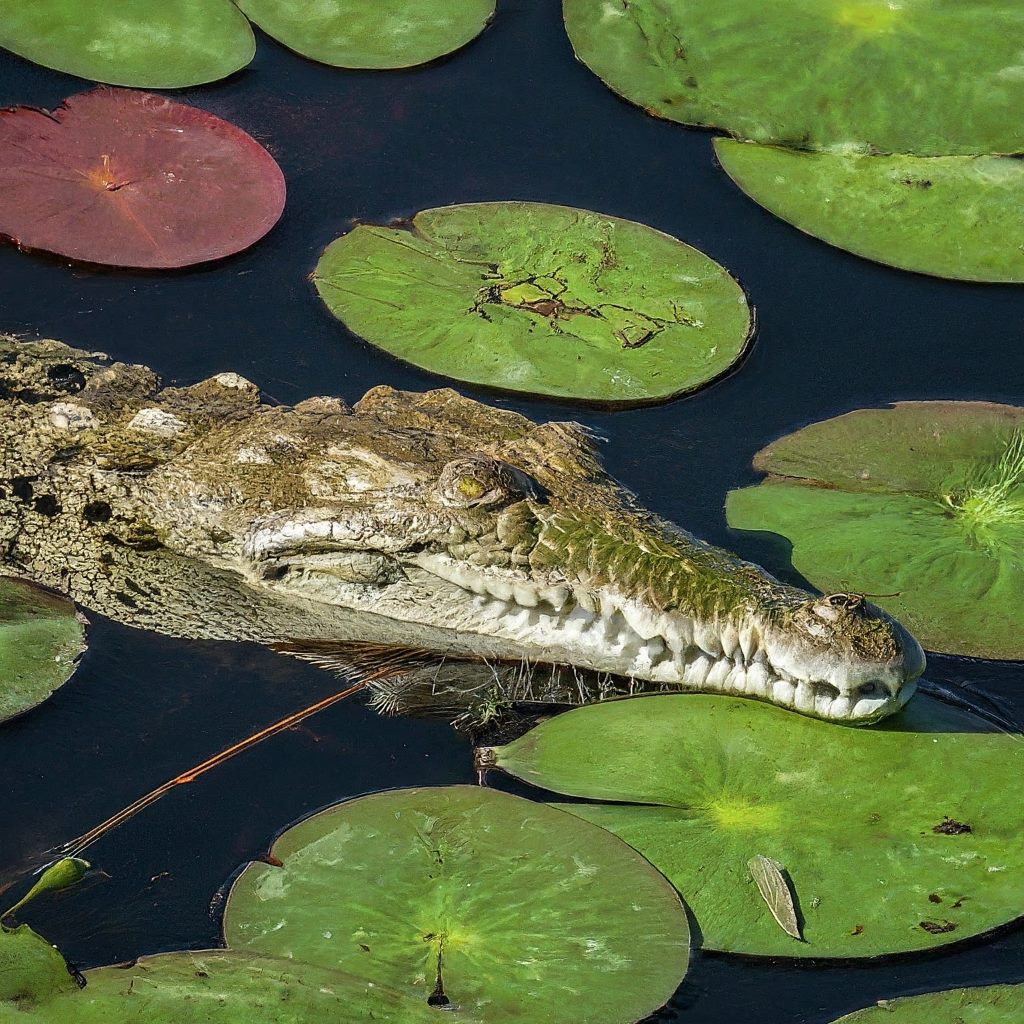
Australian Freshwater Crocodile (Crocodylus johnstoni)
Overview: The Australian Freshwater Crocodile, also known as the Johnston’s crocodile or “freshie,” is a relatively small crocodilian species endemic to northern Australia. It is primarily found in freshwater habitats, including rivers, billabongs, and freshwater streams.
Characteristics: Australian Freshwater Crocodiles have a relatively slender build and a broad snout compared to their larger relative, the Saltwater Crocodile. Adults typically reach lengths of 2 to 3 meters, with females being smaller than males.
Habitat: Australian Freshwater Crocodiles prefer clear, freshwater habitats with abundant vegetation and basking sites. They are commonly found in billabongs, rivers, and waterholes across northern Australia.
Sounds: Australian Freshwater Crocodiles are known to produce various vocalizations, including grunts, hisses, and chirping sounds, particularly during the breeding season and territorial displays.
Diet: Australian Freshwater Crocodiles primarily feed on fish, frogs, crustaceans, and small reptiles, using ambush hunting techniques to capture their prey.
Predators: While adult Australian Freshwater Crocodiles have few natural predators, hatchlings and juveniles may fall prey to large birds, fish, and other crocodiles.
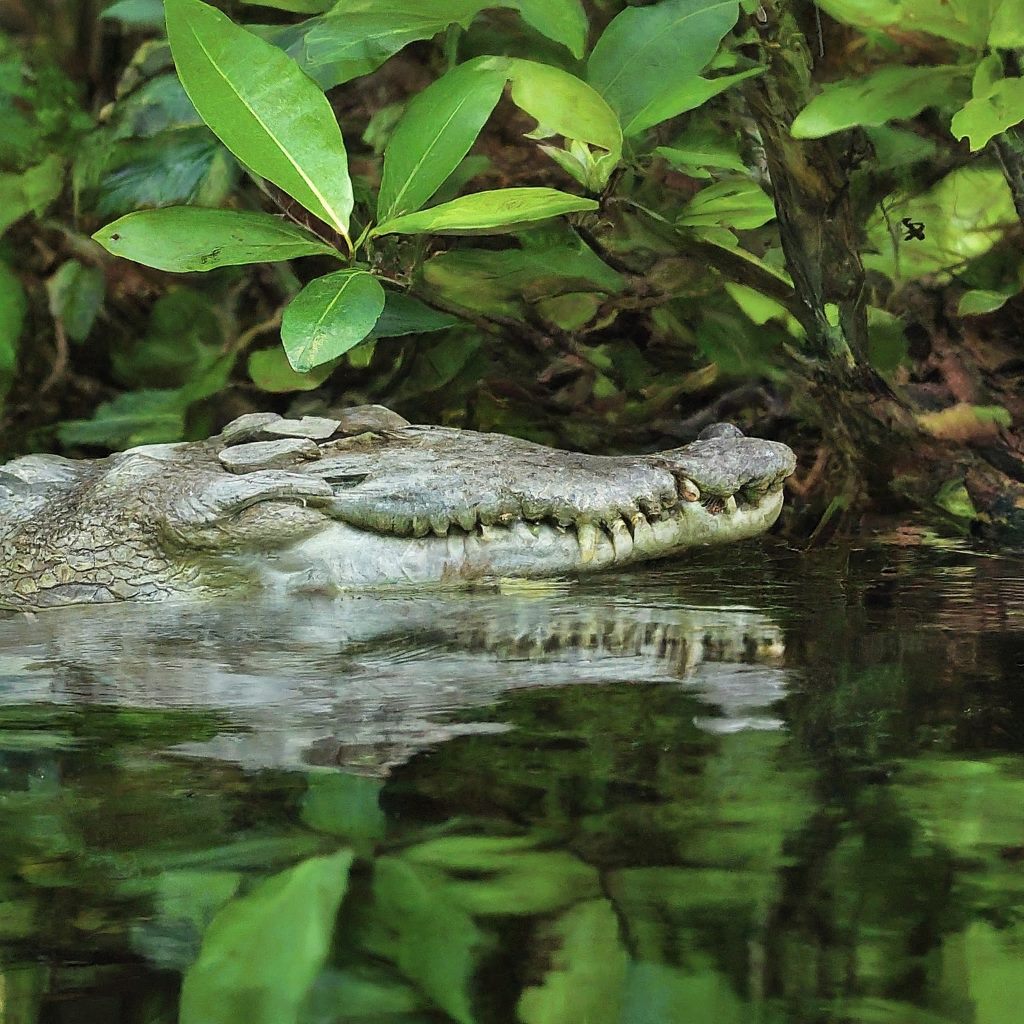
Cuban Crocodile (Crocodylus rhombifer)
Overview: The Cuban Crocodile is a medium-sized crocodilian species endemic to Cuba, known for its striking coloration and aggressive behavior. It is considered one of the most endangered crocodile species in the world due to habitat loss and poaching.
Characteristics: Cuban Crocodiles have a robust build and distinctive olive-green coloration with dark markings. They are known for their powerful jaws and agility, making them efficient hunters in their freshwater habitats.
Habitat: Cuban Crocodiles inhabit a variety of freshwater habitats, including rivers, swamps, and marshes, where they rely on dense vegetation and basking sites for shelter and ambush hunting.
Sounds: Cuban Crocodiles are known to produce a range of vocalizations, including grunts, hisses, and bellows, particularly during the breeding season and territorial disputes.
Diet: Cuban Crocodiles are opportunistic predators, feeding on a diverse range of prey, including fish, crustaceans, small mammals, birds, and occasionally larger prey such as deer or livestock.
Predators: Adult Cuban Crocodiles have few natural predators, although they may occasionally fall prey to large predators such as jaguars or humans. Eggs and hatchlings are vulnerable to predation by birds, mammals, and other reptiles.
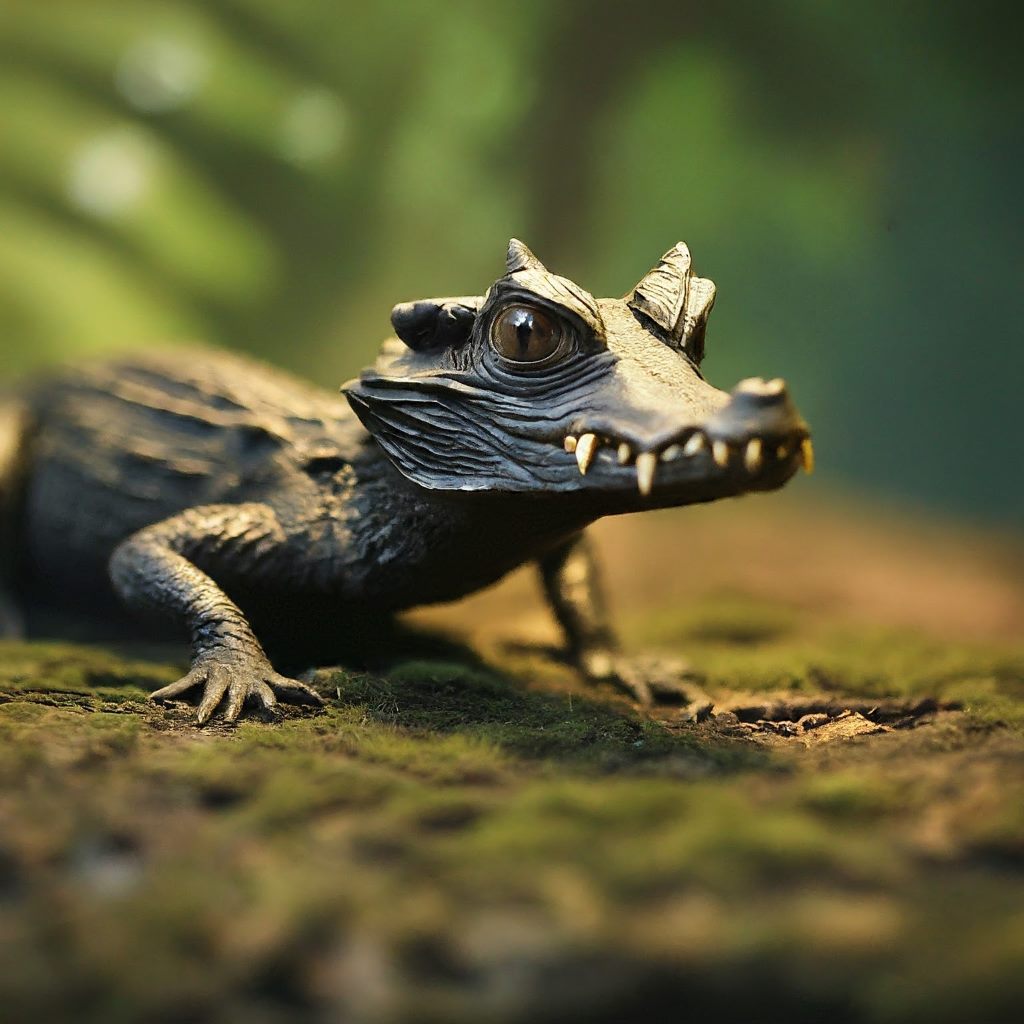
Dwarf Crocodile (Osteolaemus tetraspis)
Overview: The Dwarf Crocodile, also known as the African Dwarf Crocodile, is the smallest crocodilian species native to sub-Saharan Africa. Despite its small size, it is an apex predator in its freshwater habitats.
Characteristics: Dwarf Crocodiles have a short, broad snout and a heavily armored body, with adults reaching lengths of up to 1.5 to 1.9 meters. They have a dark brown or black coloration with yellowish markings.
Habitat: Dwarf Crocodiles inhabit a variety of freshwater habitats, including swamps, marshes, and slow-moving rivers, where they rely on dense vegetation and submerged logs for shelter and hunting.
Sounds: Dwarf Crocodiles are known to produce vocalizations, including grunts, hisses, and bellows, particularly during the breeding season and territorial displays.
Diet: Dwarf Crocodiles primarily feed on fish, crustaceans, amphibians, and small mammals, using ambush hunting techniques to capture their prey.
Predators: While adult Dwarf Crocodiles have few natural predators, eggs and hatchlings may fall prey to birds, mammals, and other reptiles.
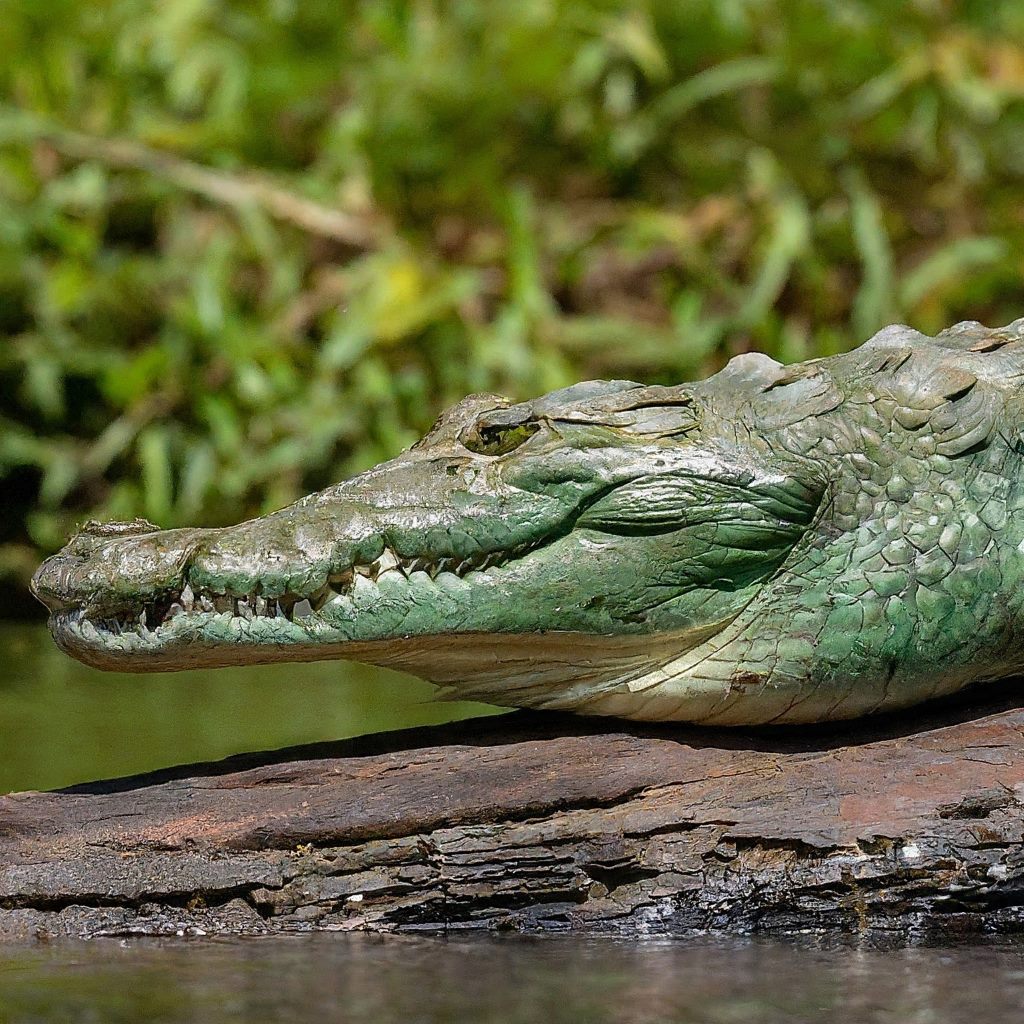
Morelet’s Crocodile (Crocodylus moreletii)
Overview: Morelet’s Crocodile is a medium-sized crocodilian species native to freshwater habitats in Mexico, Belize, and Guatemala. It is named after the French naturalist Pierre Marie Arthur Morelet.
Characteristics: Morelet’s Crocodiles have a broad snout and a heavily armored body, with adults reaching lengths of up to 3 to 4 meters. They have a dark olive-brown coloration with dark spots and bands.
Habitat: Morelet’s Crocodiles inhabit a variety of freshwater habitats, including rivers, swamps, and marshes, where they rely on dense vegetation and submerged logs for shelter and hunting.
Sounds: Morelet’s Crocodiles are known to produce vocalizations, including grunts, hisses, and bellows, particularly during the breeding season and territorial displays.
Diet: Morelet’s Crocodiles primarily feed on fish, crustaceans, amphibians, and small mammals, using ambush hunting techniques to capture their prey.
Predators: While adult Morelet’s Crocodiles have few natural predators, eggs and hatchlings may fall prey to birds, mammals, and other reptiles.
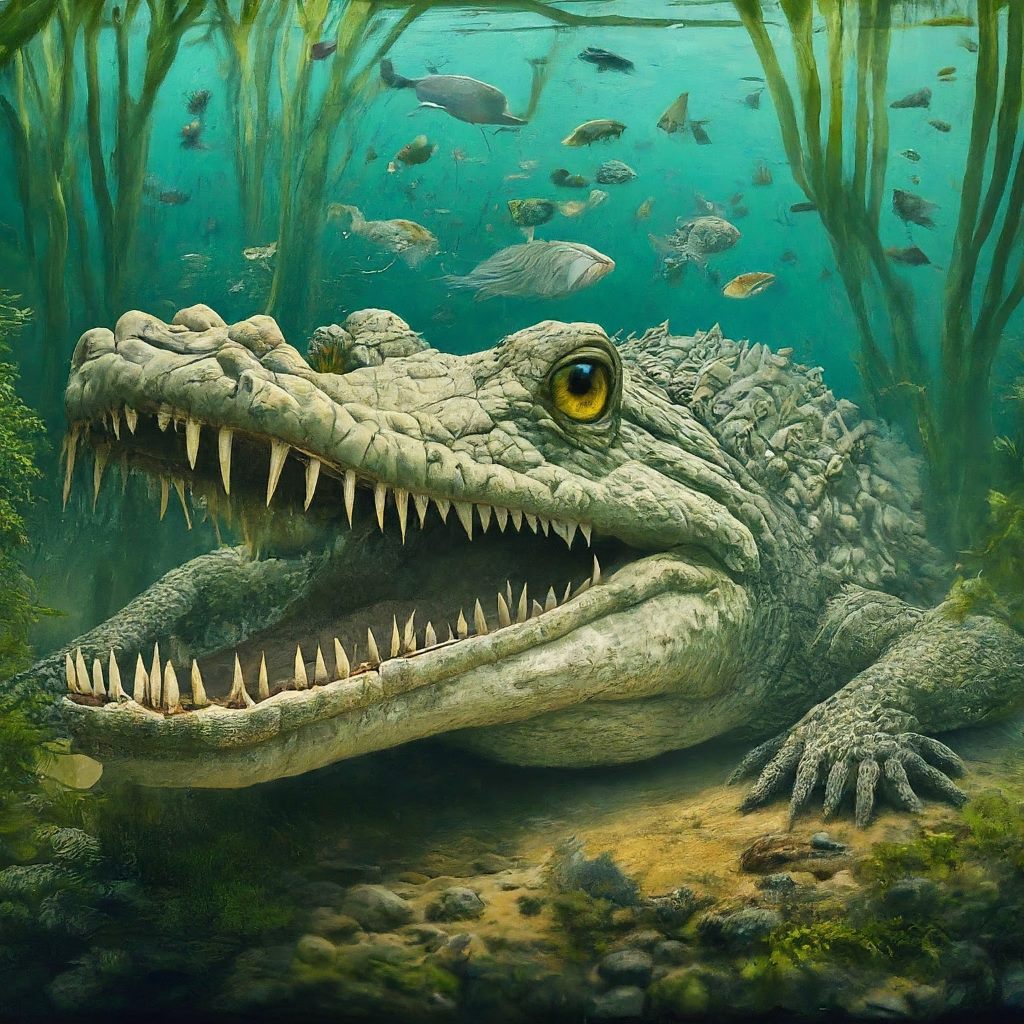
Mugger Crocodile (Crocodylus palustris)
Overview: The Mugger Crocodile, also known as the Indian Mugger or Marsh Crocodile, is a medium-sized crocodilian species native to freshwater habitats in the Indian subcontinent.
Characteristics: Mugger Crocodiles have a broad snout and a heavily armored body, with adults reaching lengths of up to 3 to 4 meters. They have a grayish-brown coloration with dark markings.
Habitat: Mugger Crocodiles inhabit a variety of freshwater habitats, including rivers, lakes, and marshes, where they rely on dense vegetation and basking sites for shelter and hunting.
Sounds: Mugger Crocodiles are known to produce vocalizations, including grunts, hisses, and bellows, particularly during the breeding season and territorial displays.
Diet: Mugger Crocodiles primarily feed on fish, crustaceans, amphibians, and small mammals, using ambush hunting techniques to capture their prey.
Predators: While adult Mugger Crocodiles have few natural predators, eggs and hatchlings may fall prey to birds, mammals, and other reptiles.
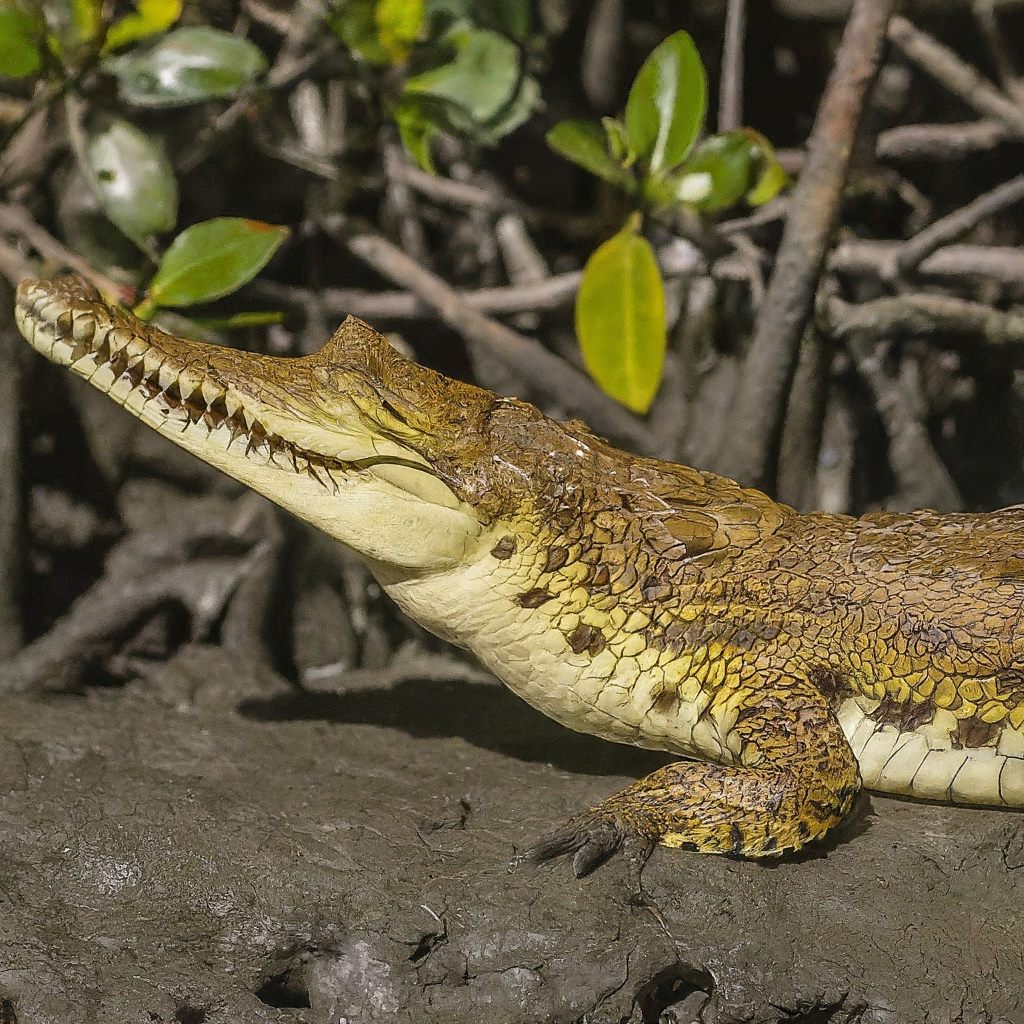
New Guinea Freshwater Crocodile (Crocodylus novaeguineae)
Overview: The New Guinea Freshwater Crocodile is a small crocodilian species native to freshwater habitats on the island of New Guinea.
Characteristics: New Guinea Freshwater Crocodiles have a slender build and a relatively long snout, with adults reaching lengths of up to 2 to 3 meters. They have a dark brown coloration with lighter markings.
Habitat: New Guinea Freshwater Crocodiles inhabit a variety of freshwater habitats, including rivers, streams, and swamps, where they rely on dense vegetation and basking sites for shelter and hunting.
Sounds: New Guinea Freshwater Crocodiles are known to produce vocalizations, including grunts, hisses, and bellows, particularly during the breeding season and territorial displays.
Diet: New Guinea Freshwater Crocodiles primarily feed on fish, crustaceans, amphibians, and small mammals, using ambush hunting techniques to capture their prey.
Predators: While adult New Guinea Freshwater Crocodiles have few natural predators, eggs and hatchlings may fall prey to birds, mammals, and other reptiles.
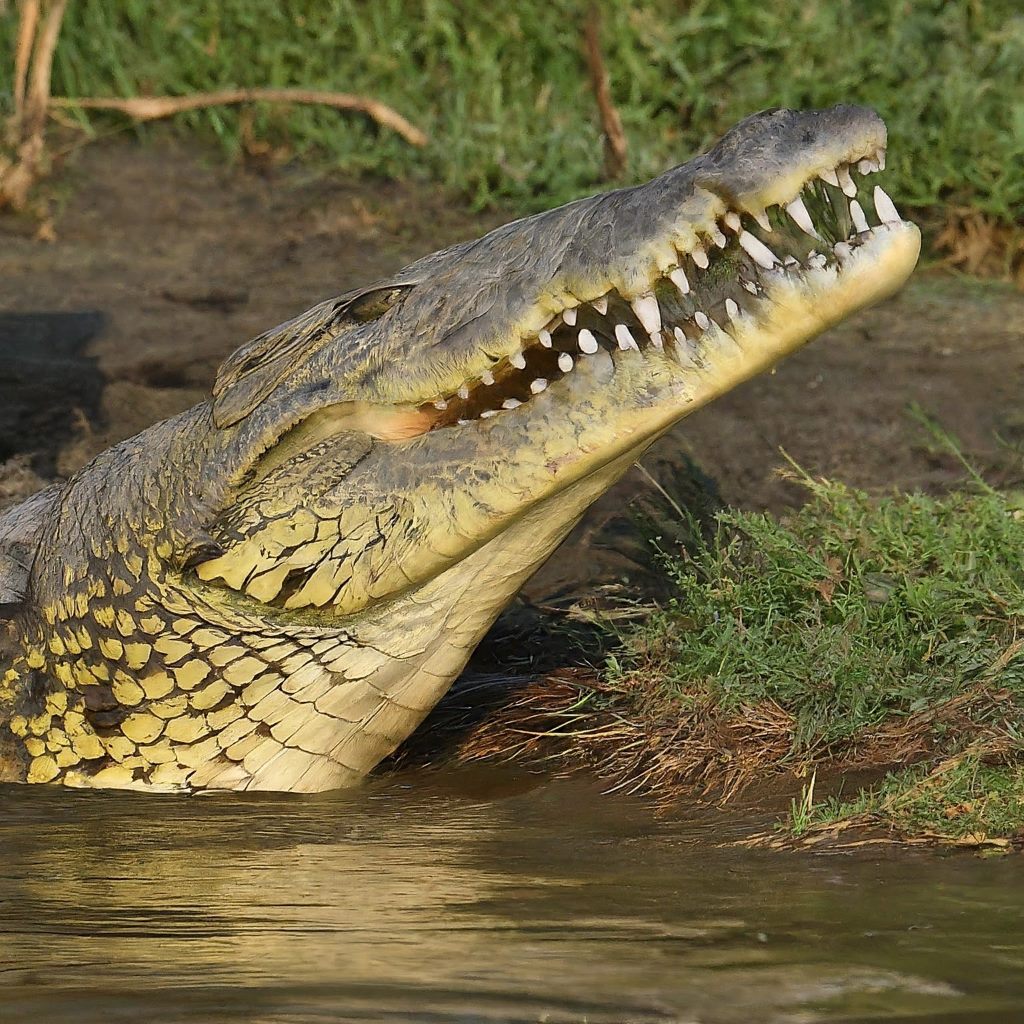
Nile Crocodile (Crocodylus niloticus)
Overview: The Nile Crocodile is one of the largest crocodilian species native to freshwater habitats in Africa, known for its aggressive behavior and powerful jaws.
Characteristics: Nile Crocodiles have a robust build and a broad snout, with adults reaching lengths of up to 5 to 6 meters. They have a grayish-green coloration with dark markings.
Habitat: Nile Crocodiles inhabit a variety of freshwater habitats, including rivers, lakes, and swamps, where they rely on dense vegetation and basking sites for shelter and hunting.
Sounds: Nile Crocodiles are known to produce vocalizations, including grunts, hisses, and bellows, particularly during the breeding season and territorial displays.
Diet: Nile Crocodiles are apex predators, feeding on a diverse range of prey, including fish, mammals, birds, and occasionally larger prey such as wildebeest or buffalo.
Predators: Adult Nile Crocodiles have few natural predators, although they may occasionally fall prey to large predators such as lions or humans. Eggs and hatchlings are vulnerable to predation by birds, mammals, and other reptiles.
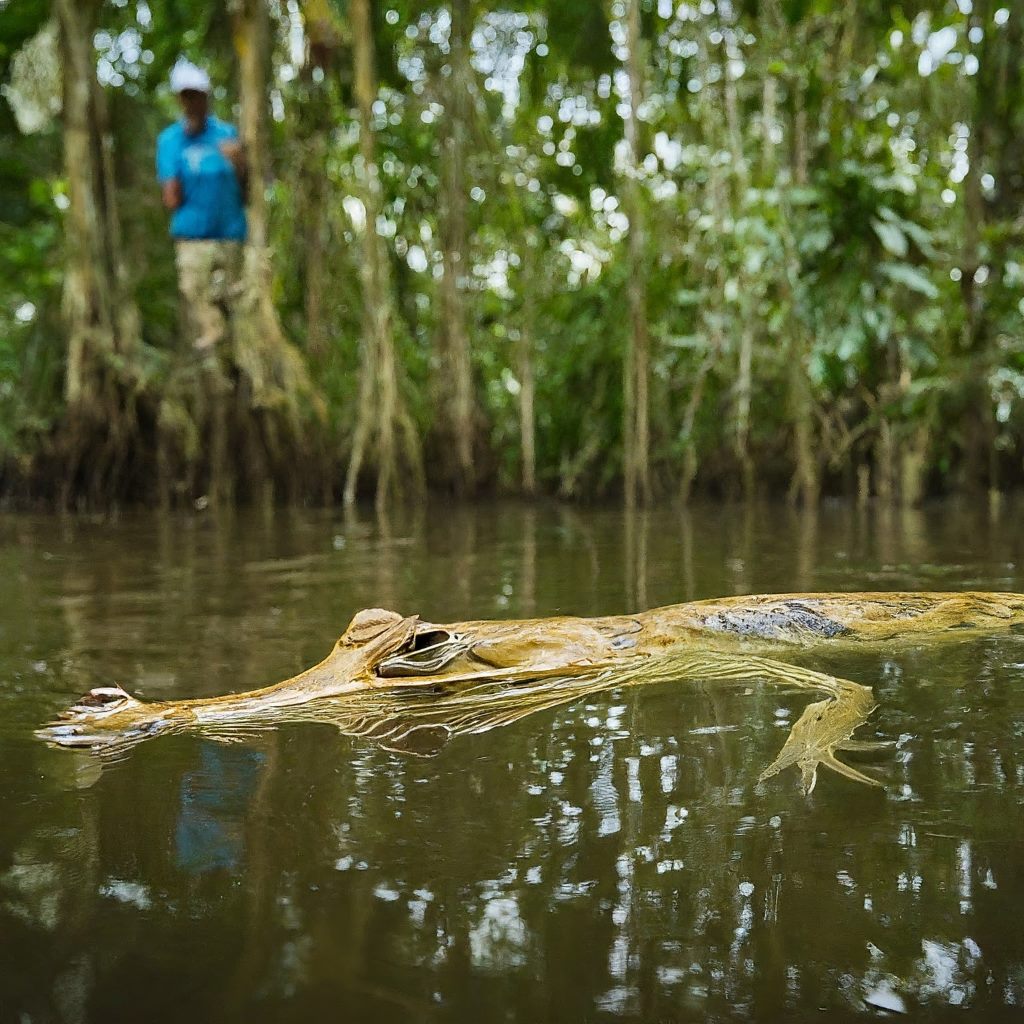
Orinoco Crocodile (Crocodylus intermedius)
Overview: The Orinoco Crocodile is a critically endangered crocodilian species native to freshwater habitats in the Orinoco River basin of Colombia and Venezuela.
Characteristics: Orinoco Crocodiles have a robust build and a broad snout, with adults reaching lengths of up to 4 to 5 meters. They have a dark olive-brown coloration with lighter markings.
Habitat: Orinoco Crocodiles inhabit a variety of freshwater habitats, including rivers, lakes, and marshes, where they rely on dense vegetation and basking sites for shelter and hunting.
Sounds: Orinoco Crocodiles are known to produce vocalizations, including grunts, hisses, and bellows, particularly during the breeding season and territorial displays.
Diet: Orinoco Crocodiles primarily feed on fish, crustaceans, amphibians, and small mammals, using ambush hunting techniques to capture their prey.
Predators: Adult Orinoco Crocodiles have few natural predators, although they may occasionally fall prey to large predators such as jaguars or humans. Eggs and hatchlings are vulnerable to predation by birds, mammals, and other reptiles.
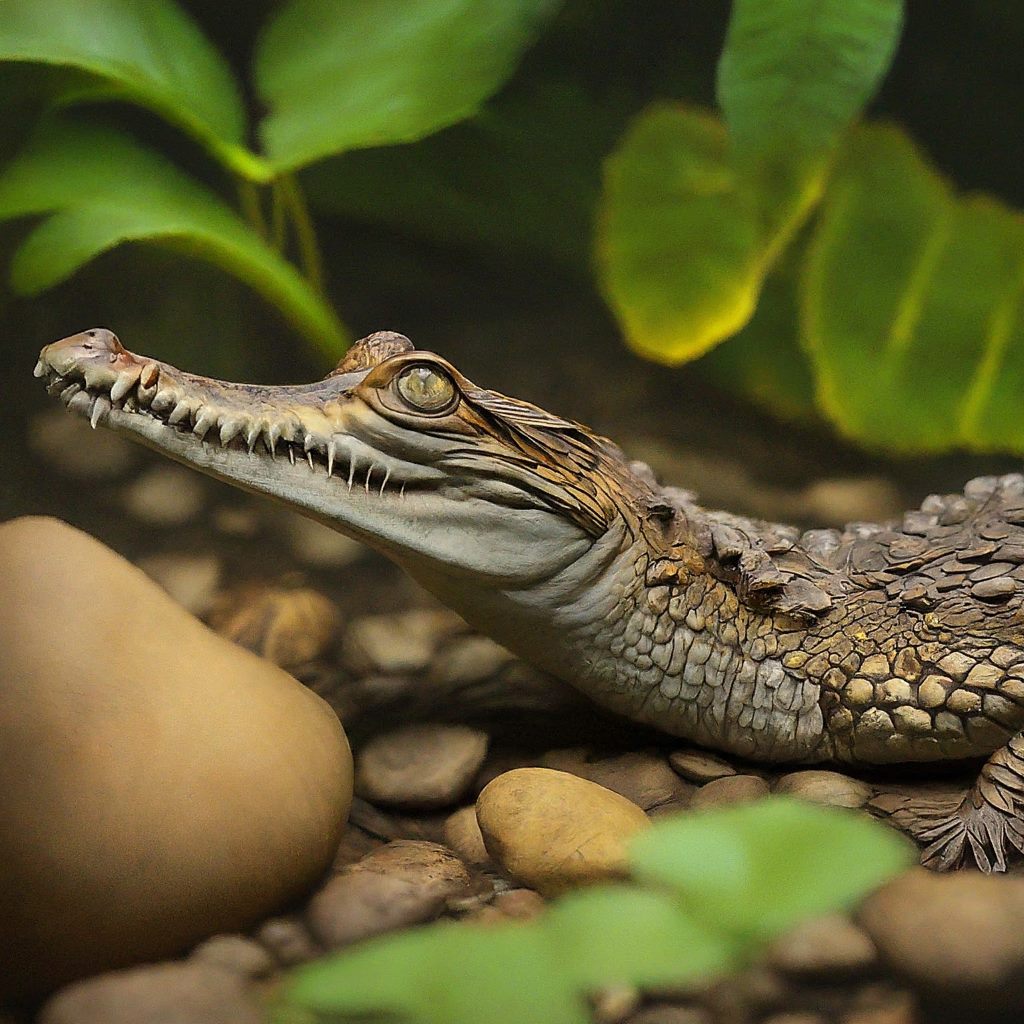
Philippine Crocodile (Crocodylus mindorensis)
Overview: The Philippine Crocodile is a critically endangered crocodilian species native to freshwater habitats in the Philippines.
Characteristics: Philippine Crocodiles have a slender build and a relatively long snout, with adults reaching lengths of up to 2 to 3 meters. They have a dark olive-brown coloration with lighter markings.
Habitat: Philippine Crocodiles inhabit a variety of freshwater habitats, including rivers, lakes, and marshes, where they rely on dense vegetation and basking sites for shelter and hunting.
Sounds: Philippine Crocodiles are known to produce vocalizations, including grunts, hisses, and bellows, particularly during the breeding season and territorial displays.
Diet: Philippine Crocodiles primarily feed on fish, crustaceans, amphibians, and small mammals, using ambush hunting techniques to capture their prey.
Predators: Adult Philippine Crocodiles have few natural predators, although they may occasionally fall prey to large predators such as monitor lizards or humans. Eggs and hatchlings are vulnerable to predation by birds, mammals, and other reptiles.
Crocodylinae
Marsh Crocodile:
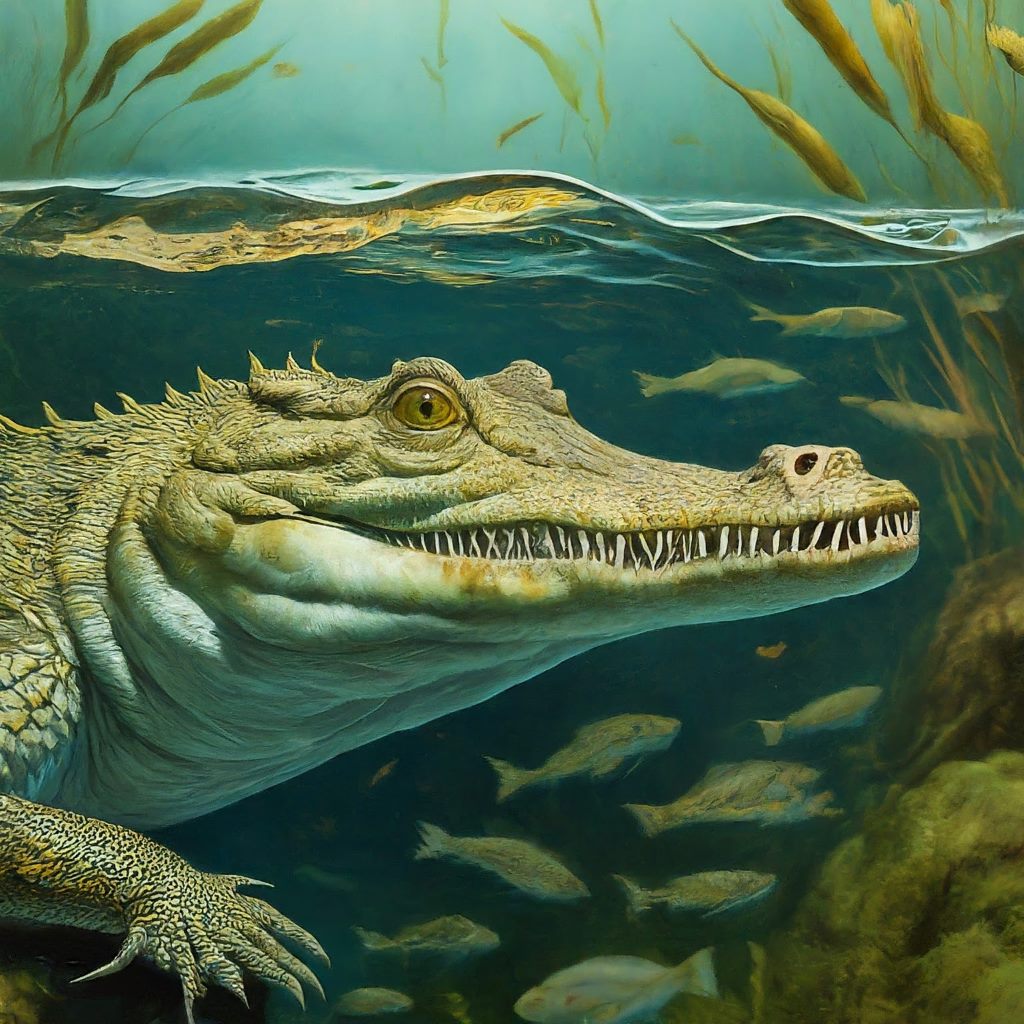
Overview: The Marsh Crocodile, also known as the Mugger Crocodile, is a medium-sized crocodilian species found primarily in freshwater habitats across the Indian subcontinent.
Characteristics: Marsh Crocodiles have a broad snout and a robust body, with adults reaching lengths of up to 3 to 4 meters. They typically have a grayish-brown coloration with dark markings, allowing them to blend into their muddy habitats.
Habitat: Marsh Crocodiles inhabit a variety of freshwater habitats, including rivers, lakes, marshes, and irrigation canals. They are well-adapted to both flowing and stagnant water bodies, where they bask in the sun to regulate their body temperature.
Sounds: Marsh Crocodiles produce a range of vocalizations, including low-frequency grunts, hisses, and bellows, particularly during the breeding season and territorial displays.
Diet: Marsh Crocodiles are opportunistic predators, feeding on a diverse range of prey, including fish, amphibians, reptiles, birds, and mammals. They use stealth and ambush tactics to capture their prey.
Predators: Adult Marsh Crocodiles have few natural predators, although they may occasionally fall prey to large predators such as tigers or humans. Eggs and hatchlings are vulnerable to predation by birds, mammals, and other reptiles.
Quinkana:
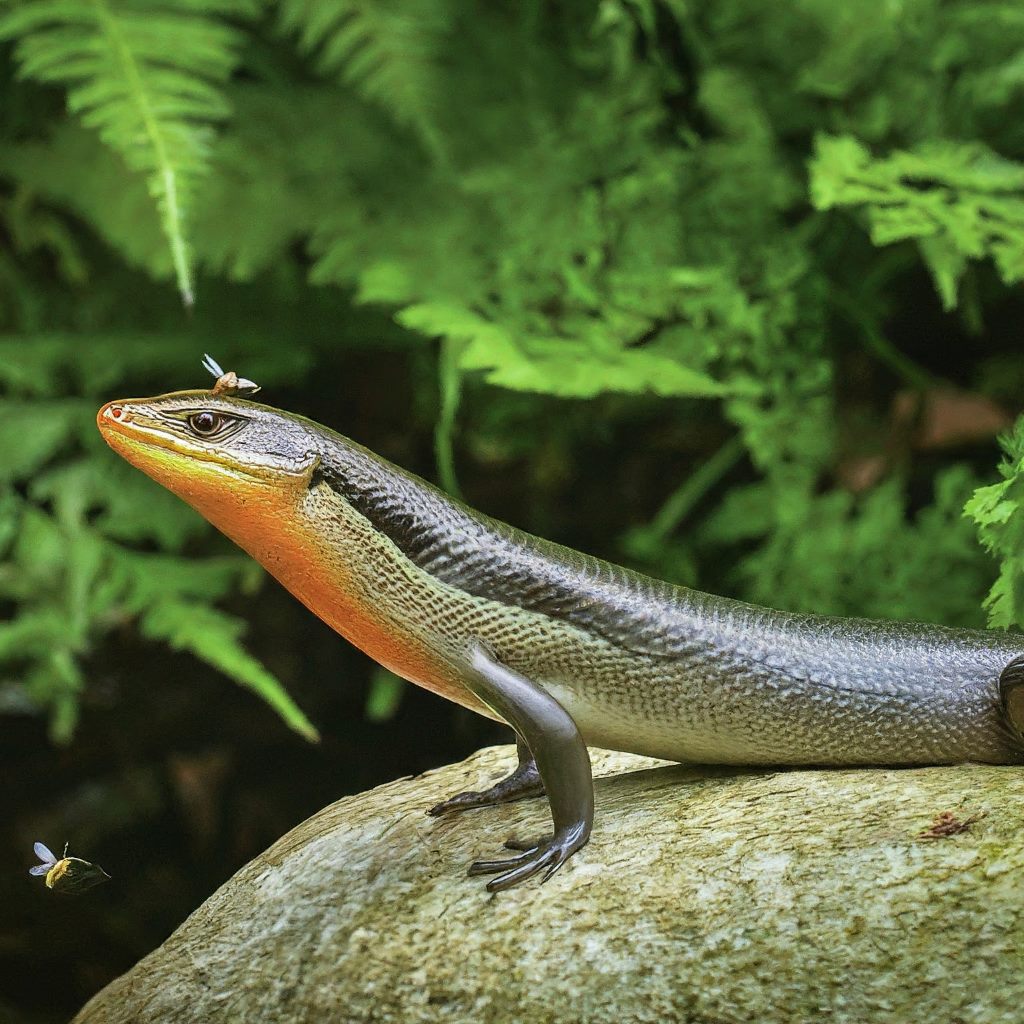
Overview: Quinkana is an extinct genus of crocodile that lived in Australia during the Pleistocene epoch. It is known for its large size and predatory behavior.
Characteristics: Quinkana species were among the largest terrestrial predators of their time, with some species reaching lengths of up to 5 meters. They had robust bodies, powerful jaws, and sharp teeth adapted for hunting and scavenging.
Habitat: Quinkana species inhabited various habitats across Australia, including forests, woodlands, and wetlands. They were apex predators in their ecosystems, preying on a variety of mammals, reptiles, and other large vertebrates.
Sounds: Since Quinkana species are extinct, there is limited information available about their vocalizations or communication behaviors.
Diet: Quinkana species were apex predators, feeding on a variety of prey, including large mammals such as kangaroos, wombats, and diprotodontids. They were also scavengers, feeding on carrion and carcasses.
Predators: As apex predators, adult Quinkana species had few natural predators, although they may have occasionally competed with other large carnivores for food and territory.
Zhyrasuchus:
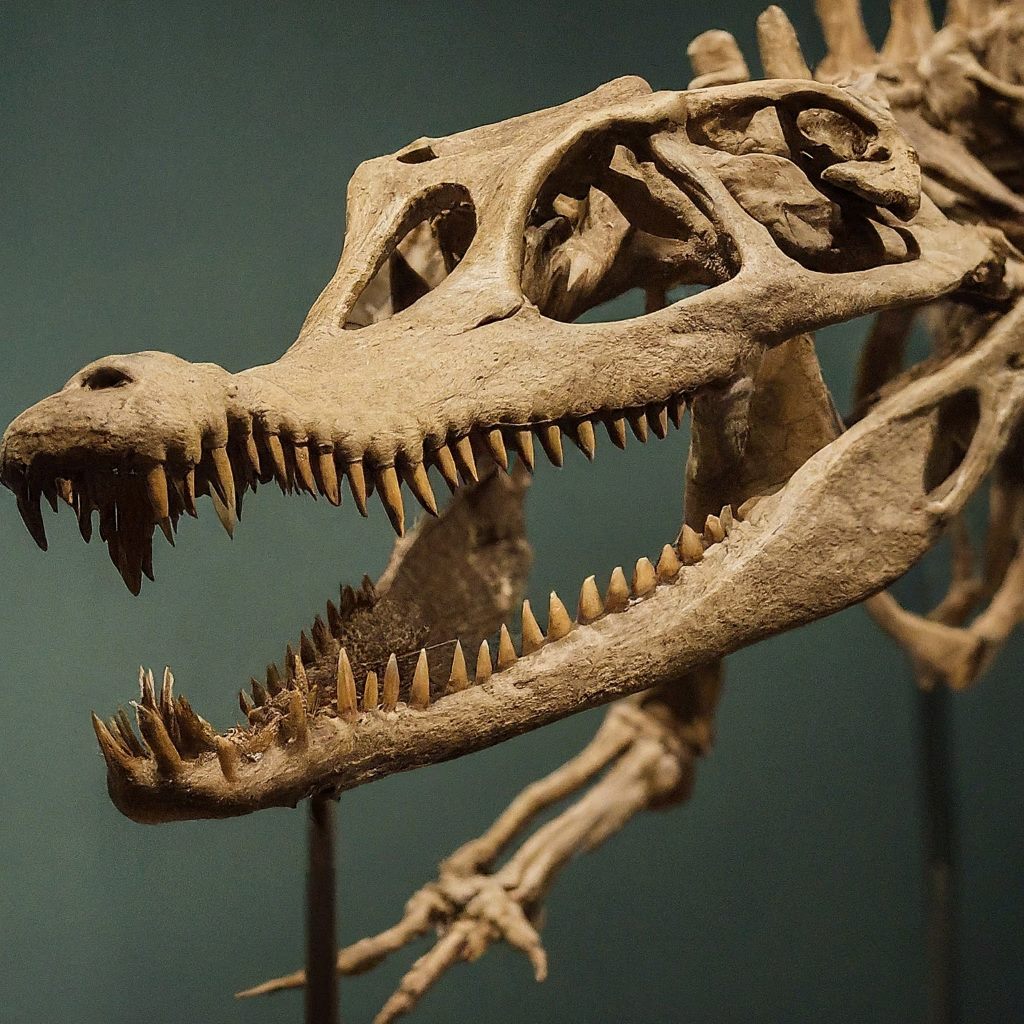
Overview: Zhyrasuchus is an extinct genus of crocodile that lived during the Late Cretaceous period in what is now Central Asia.
Characteristics: Zhyrasuchus species were large crocodilians, with some individuals estimated to have reached lengths of up to 6 meters. They had elongated snouts, robust bodies, and powerful limbs adapted for swimming and hunting.
Habitat: Zhyrasuchus species likely inhabited freshwater habitats such as rivers, lakes, and swamps, where they were apex predators in their ecosystems.
Sounds: Since Zhyrasuchus species are extinct, there is limited information available about their vocalizations or communication behaviors.
Diet: Zhyrasuchus species were apex predators, feeding on a variety of prey, including fish, amphibians, reptiles, and small dinosaurs. They were opportunistic feeders, using ambush tactics to capture their prey.
Predators: As apex predators, adult Zhyrasuchus species had few natural predators, although they may have occasionally faced competition from other large carnivores in their ecosystem.
Conclusion:
Crocodiles are a diverse group of reptiles, with each type exhibiting unique characteristics, behaviors, and ecological roles. From the Nile Crocodile’s dominance in African river systems to the critically endangered Orinoco Crocodile’s struggle for survival in South America, these ancient predators play a vital role in maintaining the health of freshwater ecosystems. By understanding and conserving the different types of crocodiles and their habitats, we can ensure their continued existence for future generations.

94% of pet owners say their animal pal makes them smile more than once a day. In 2007, I realized that I was made for saving Animals. My father is a Vet, and I think every pet deserves one. I started this blog, “InPetCare”, in 2019 with my father to enlighten a wider audience.
